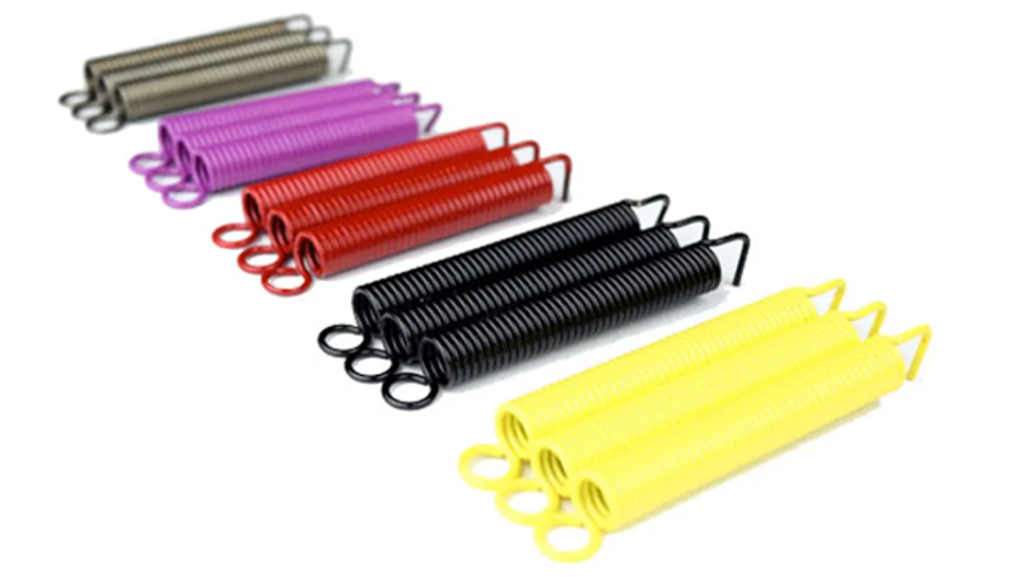Do Tremolo Springs Really Make a Difference? A Guide Exploring Their Effect on Performance and Tone.
When it comes to electric guitars, every little detail can have a big impact on the overall performance and tone. From the choice of pickups to the selection of strings, guitarists meticulously fine-tune their instruments to achieve the desired sound. But what about tremolo springs? Are they just another accessory or do they truly make a significant difference?
In this comprehensive guide, we will delve into the world of tremolo springs and explore their effect on both the performance and tone of your guitar. We will unravel the mysteries behind tremolo spring tension and its implications on playability and stability. We will also compare different tremolo spring setups to help you find the one that suits your style best.
So, are you ready to uncover the secrets of tremolo springs and elevate your guitar playing to the next level? Let’s dive in!
Key Takeaways:
- Tremolo springs play a crucial role in shaping the performance and tone of your guitar.
- The tension of tremolo springs affects playability, stability, and overall feel of the instrument.
- Different tremolo spring setups offer unique characteristics and response.
- Tremolo springs can impact the resonance, sustain, and tonal characteristics of the guitar.
- Choosing the right tremolo springs and configuration is essential for achieving your desired sound and playability.
Understanding Tremolo Springs and Their Function in Guitars
Tremolo springs are an essential component of the tremolo system in guitars. These metal springs play a critical role in controlling the movement of the bridge and maintaining the tension of the strings. By understanding the function of tremolo springs, guitarists can optimize their instrument’s performance and achieve their desired tone.
What Do Tremolo Springs Do?
Tremolo springs work in conjunction with the tremolo bridge and the strings to provide various effects such as vibrato and dive bombs. Their primary function is to counterbalance the tension of the strings and maintain equilibrium in the tremolo system. This allows guitarists to control the movement of the bridge, creating pitch variations and adding expressive elements to their playing.
The Role of Tremolo Spring Tension in Guitar Performance
The tension of tremolo springs can play a crucial role in guitar performance. By adjusting the tension, guitarists can fine-tune the responsiveness and feel of the instrument. Higher spring tension provides more resistance and stability, ideal for maintaining tuning stability and sustain. On the other hand, lower spring tension can create a looser feel, enhancing the playability for certain styles such as vintage-inspired sounds.
The Impact of Tremolo Springs on Guitar Tone and Sustain
Tremolo springs can also have an impact in shaping the tone and sustain of a guitar. The tension of these springs directly affects the overall resonance of the instrument, contributing to its tonal characteristics. Higher tension in the tremolo springs can add more sustain and clarity to the notes, resulting in a longer sustain and improved articulation. On the other hand, lower tension in the tremolo springs creates a looser feel and can produce a vintage-style sound with a shorter sustain.
It’s important to note that the interaction between the strings and the tremolo springs also influences the guitar’s tone and sustain. When the player applies pressure to the tremolo bar, the strings’ tension changes, causing the springs to compress and release. This interaction affects the string vibration, controlling the sustain and decay of each note. By adjusting the tension of the tremolo springs, guitarists can achieve the desired balance between sustain and responsiveness for their playing style.
Understanding the impact of tremolo springs on tone and sustain is crucial for guitarists who seek to optimize their setup. By experimenting with different tremolo spring tensions, players can fine-tune their instrument’s sound to match their preferences and musical genre. Additionally, choosing the right combination of tremolo spring tension and string gauge can further enhance the guitar’s sustain and overall playability.
Setting Up Your Tremolo: Balancing Springs and String Tension
When it comes to setting up your tremolo system, finding the right balance between the tension of the tremolo springs and the tension of the strings is crucial. This ensures optimal performance, stability, and playability for your guitar. In this section, we will explore various aspects of tremolo setup, including the pros and cons of floating tremolos, the stability and sustain considerations of decking vs blocking the tremolo, and the importance of tremolo spring configurations.
Floating Tremolo: Pros and Cons
A floating tremolo refers to a tremolo system that allows both upward and downward movement of the tremolo bridge. This enables guitarists to perform pitch-raising techniques like pull-ups and dive bombs. The advantage of a floating tremolo is its versatility and expressive capabilities. However, the drawback is that it can be more challenging to tune and maintain stability due to the increased string tension caused by the floating bridge. It requires careful adjustment of the tremolo springs and string tension to find the right balance.
Decking vs. Blocking: Stability and Sustain Considerations
Decking and blocking are techniques used to stabilize the tremolo system and increase sustain by preventing upward movement of the bridge. Decking involves tightening the tremolo springs to keep the bridge flush against the body of the guitar. This enhances the transfer of vibrations and sustain. On the other hand, blocking involves adding a wooden block or other material to restrict the movement of the tremolo entirely. This maximizes stability and sustain but eliminates the pitch-raising effects of a floating tremolo, essentially turning your tremolo system into a fixed bridge or hard tail. Choosing between decking and blocking depends on personal preference and the desired playing style.
| Tremolo Setup | Pros | Cons |
|---|---|---|
| Floating Tremolo | Versatility, expressive capabilities | More challenging to tune and maintain stability |
| Decking | Enhanced transfer of vibrations, increased sustain | Limits pitch-raising effects |
| Blocking | Maximum stability, sustain | Eliminates pitch-raising effects |
The Most Popular Tremolo Spring Configurations
2 Tremolo Spring Configuration
Pros:
1. Increased Tremolo Responsiveness: With only two
springs, the tension on the tremolo system is reduced, allowing for smoother
and more sensitive tremolo bar manipulation. This setup is favored by players
who prefer a lighter feel and greater range of tremolo arm movement.
2. Enhanced Vibrato Effects: The lighter tension of a
two-spring configuration can facilitate more expressive vibrato effects,
allowing players to achieve subtle pitch variations with ease.
Cons:
1. Potential Tuning Instability: Due to the reduced
tension, a two-spring configuration may be more prone to tuning instability,
especially during aggressive tremolo use or heavy string bending. The lighter
tension may not provide enough resistance to counteract string tension changes effectively.
2. Limited Stability: The lower tension of two
springs may result in less stability for the tremolo system, particularly when
using thicker gauge strings or performing extreme tremolo bar maneuvers. This
setup may require more frequent adjustments to maintain tuning stability.
3 Tremolo Spring Configuration
Pros:
1. Balanced Tension: The standard three-spring
configuration offers a balanced level of tension on the tremolo system,
providing stability while allowing for moderate tremolo use. This setup strikes
a good balance between responsiveness and stability, making it suitable for a
wide range of playing styles.
2. Ease of Setup: The three-spring configuration is
straightforward to set up and adjust, making it suitable for players of all
skill levels. Most tremolo systems come pre-configured with three springs,
eliminating the need for additional modifications or adjustments.
Cons:
1. Limited Tremolo Range: Compared to configurations
with more springs, such as five-spring setups, the standard three-spring
configuration may offer a slightly narrower range of tremolo arm movement. This
limitation can affect the extent of pitch bends and dive bombs that can be
achieved with the tremolo system.
2. Potential Tuning Instability: While the standard
three-spring configuration provides adequate stability for most players, heavy
tremolo use or aggressive playing techniques may lead to minor tuning
instability. Rapid tremolo bar movements can cause the strings to detune
slightly, requiring occasional adjustments to maintain accurate tuning.
3 Tremolo Spring Angled Configuration
For decades, guitarists have debated whether arranging tremolo springs in a triangle or angled pattern improves or worsens tuning stability when using the tremolo arm. While this pattern makes the arm feel slightly stiffer, its impact on tuning is unclear, as many factors affect stability. These include string gauge, tremolo use, musical style, and more. Some claim this spring pattern is ideal, but others disagree since optimal setup depends on playing style and preferences. Ultimately, the impact of spring patterns remains an open question without definitive proof on either side.
4 and 5 Tremolo Spring Configuration
Pros:
1. Increased Stability: With five springs, the
tremolo system is subjected to higher tension, providing enhanced stability and
resistance to string tension changes. This setup is particularly beneficial for
players who require maximum tuning stability, such as those using heavier gauge
strings or performing aggressive tremolo techniques.
2. Tighter Feel: The higher tension of a five-spring
configuration can result in a firmer feel for the tremolo arm, offering greater
control and precision during tremolo use. This setup is favored by players who
prefer a more solid and responsive feel from their tremolo system.
Cons:
1. Reduced Tremolo Responsiveness: The higher tension
of five springs may make the tremolo system feel stiffer and less responsive
compared to configurations with fewer springs. Players seeking a lighter touch
and greater range of tremolo arm movement may find this setup less suitable.
2. Complex Setup: Installing and adjusting five
tremolo springs can be more challenging and time-consuming compared to
configurations with fewer springs. Achieving the optimal balance of tension and
stability may require more careful adjustment and experimentation.
Ultimately, the choice between two, three, or five spring
configurations depends on factors such as playing style, tremolo usage, string
gauge, and personal preference. Each configuration offers its own set of
advantages and drawbacks, and experimenting with different setups allows
guitarists to find the perfect balance for their individual needs.
 Unusual Tremolo Spring Setups found online
Unusual Tremolo Spring Setups found online
In the quest for the perfect sound and tone with guitars, musicians often find themselves delving into the realm of tremolo spring configurations. Experimenting with different setups becomes a captivating journey, driven by the desire to unlock new sonic possibilities and achieve unparalleled musical expression. From adjusting the number of springs to varying their tension and orientation, guitarists tirelessly explore every avenue in pursuit of sonic perfection.
This never-ending pursuit reflects the passion and dedication inherent in the art of guitar playing, where even the smallest adjustment can make a profound difference in the overall sound and feel of the instrument. Whether seeking enhanced stability, increased responsiveness, or a richer tonal palette, musicians continually push the boundaries of innovation, driven by their unwavering commitment to capturing the elusive essence of sublime guitar tone.
Tremolo Springs: Stock vs. Aftermarket Upgrades
The primary distinction between stock and aftermarket tremolo springs lies in their design, materials, and performance attributes. Stock springs, typically found in factory-installed guitars, offer basic functionality but may lack the tonal enhancements and durability of aftermarket options.
Aftermarket springs, crafted by specialized manufacturers like Raw Vintage Springs, often feature premium materials resulting in improved sustain, clarity, and overall tone. They may also offer innovative designs and customization options to optimize tremolo performance, providing guitarists with enhanced playability and tone compared to stock alternatives.
Do Noiseless Tremolo Springs Really Work?
Noiseless Tremolo Springs are marketed to alleviate the sounds generated by traditional tremolo springs during guitar play. These traditional springs can often emit a ringing or rattling noise, particularly under heavy playing or vibrational stress.
Noiseless tremolo springs utilize polymer coating technology to address this issue. However, it’s worth noting that the supposed “polymer coating” isn’t the direct factor in quelling the ringing noise. Rather, most noiseless springs available employ a piece of foam or rubber inside the spring itself.
Having to scrape off the polymer coating on both ends of a noiseless tremolo spring can be an essential step in ensuring proper grounding for your guitar’s electronics. While noiseless tremolo springs are designed to reduce unwanted noise and interference, the polymer coating can sometimes interfere with the conductivity needed for effective grounding.
By carefully scraping off the coating on both ends of the spring, you can establish a direct metal-to-metal connection between the spring and the tremolo claw, allowing for optimal grounding. This simple yet crucial adjustment can help minimize hum, buzz, and other unwanted electrical noise, ensuring that your guitar performs at its best with minimal interference.
This internal addition serves to dampen vibrations and mitigate any ringing or rattling from the tremolo springs, rather than relying solely on the polymer coating. Do they work? Yes. But, you can still modify your existing set up with a few tips found online such such as the video above.
Other Noiseless Tremolo Springs
This specific type of noiseless tremolo spring employs a clever solution to minimize unwanted noise by utilizing a heat shrinkable wrap on its exterior. This wrap acts as a damping mechanism, absorbing vibrations and reducing resonance that could otherwise manifest as unwanted noise. These are often used on tremolos that have been blocked and have no movement what so ever because the shrink wrap may hinder the spring movement that could result in tuning issues.
Tremolo Spring Claws
Another thing to consider when searching for optimum performance and tone is the quality of your tremolo’s spring claw. A standard claw’s thin tin plate and small contact area between its tabs and the spring hoop ends cause energy dissipation as vibrations transfer from the sustain block through the springs. The Tone Claw’s locking clamp plate and form-fitting posts, however, increase spring-claw contact. This enables the Tone Claw to transfer the springs’ vibrational energy back into the sustain block rather than losing it, thereby improving sustain.
The Tone Claw, a heavy-duty spring claw CNC-machined from solid brass, securely locks guitar tremolo springs in place with a clamping plate at the bridge. Weighing 4 times more than a standard claw, its robust design increases sustain and improves tone by preventing spring movement and pops during aggressive tremolo playing.
Conclusion
In conclusion, tremolo springs are a crucial component in shaping the performance, tone, and playability of your guitar. By adjusting the tension and setup of these springs, you can achieve different effects and personalize your instrument to match your desired tone and response.
Summary of the Effect of Tremolo Springs on Guitar Playability
Tremolo springs control the movement of the bridge and help maintain string tension. The tension of the springs directly affects the playability of your guitar. Higher tension can provide stability and sustain, while lower tension can introduce a looser and more vintage-style feel. By finding the right balance, you can optimize the playability of your instrument and enhance your overall performance.
Personalizing Your Guitar Setup for Desired Tone and Response
Every guitarist has unique preferences when it comes to tone and response. By personalizing your guitar setup, you can tailor the characteristics of your instrument to match your playing style. Experimenting with different tremolo spring setups, such as the number of springs and their tension, allows you to achieve the specific sound and feel you’re looking for. Don’t be afraid to explore different configurations and find what works best for you.
Final Thoughts on the Importance of Choosing the Right Tremolo Springs
Choosing the right tremolo springs for your guitar is crucial for achieving your desired sound. Poorly matched or low-quality springs can impact your overall performance and tone. It’s important to invest in high-quality tremolo springs from reputable brands to ensure optimal performance and durability. By understanding the impact of tremolo springs and making informed choices, you can enhance your playing experience and unlock the full potential of your instrument.

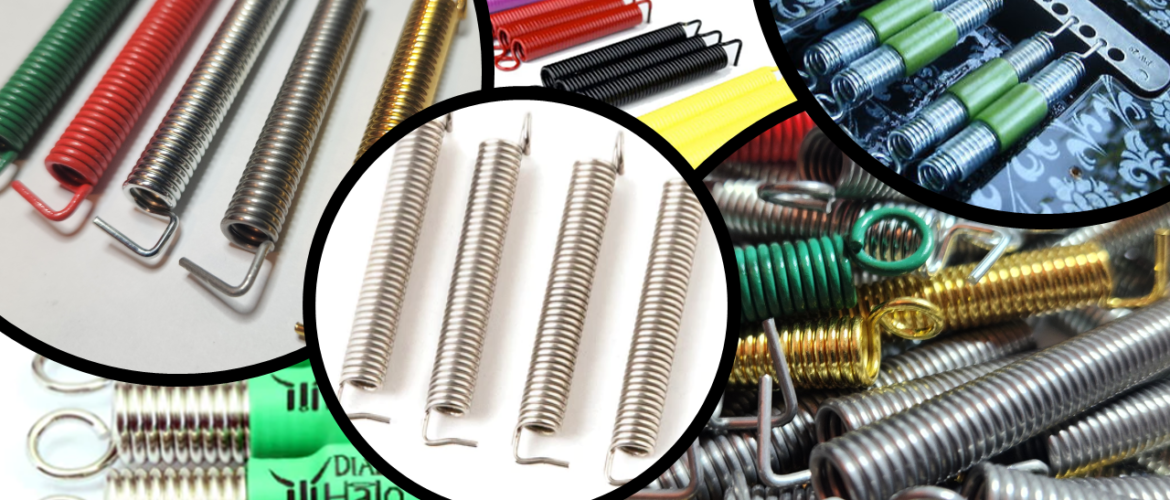
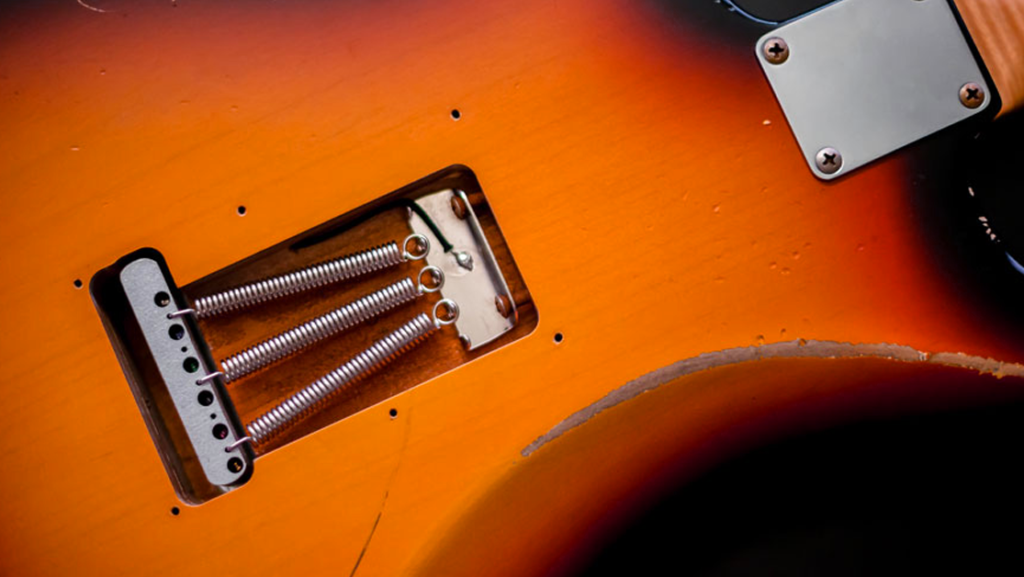
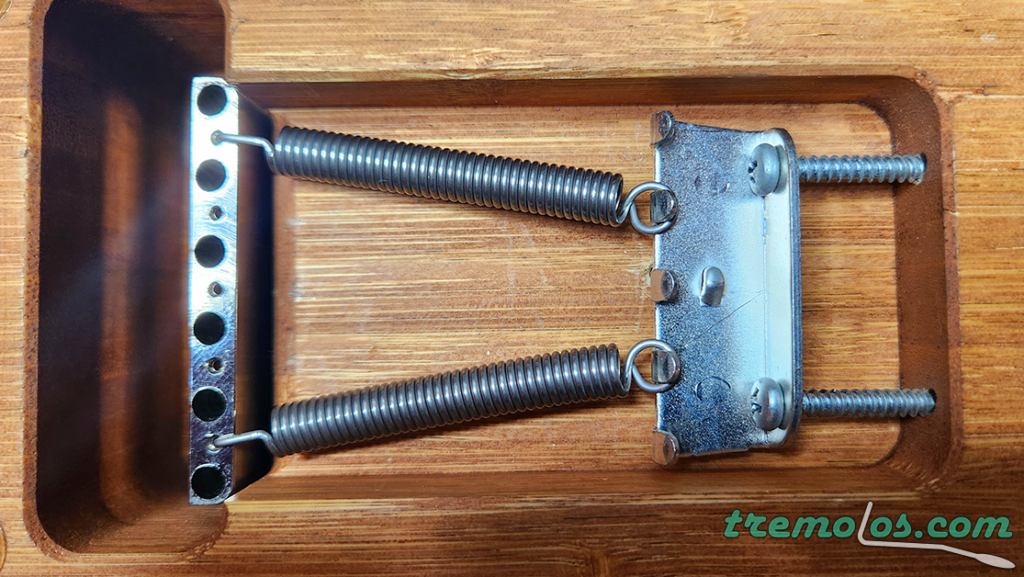
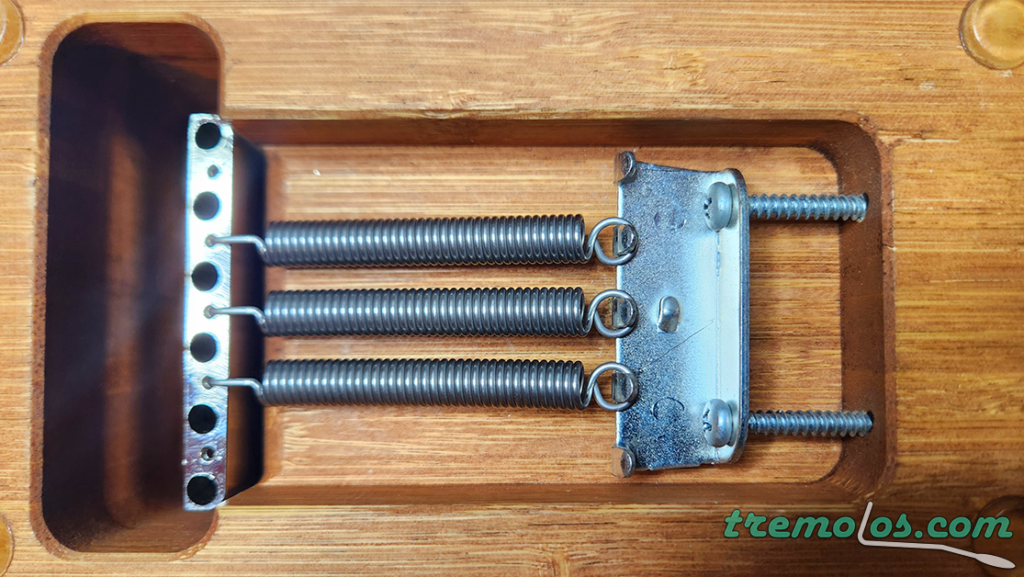
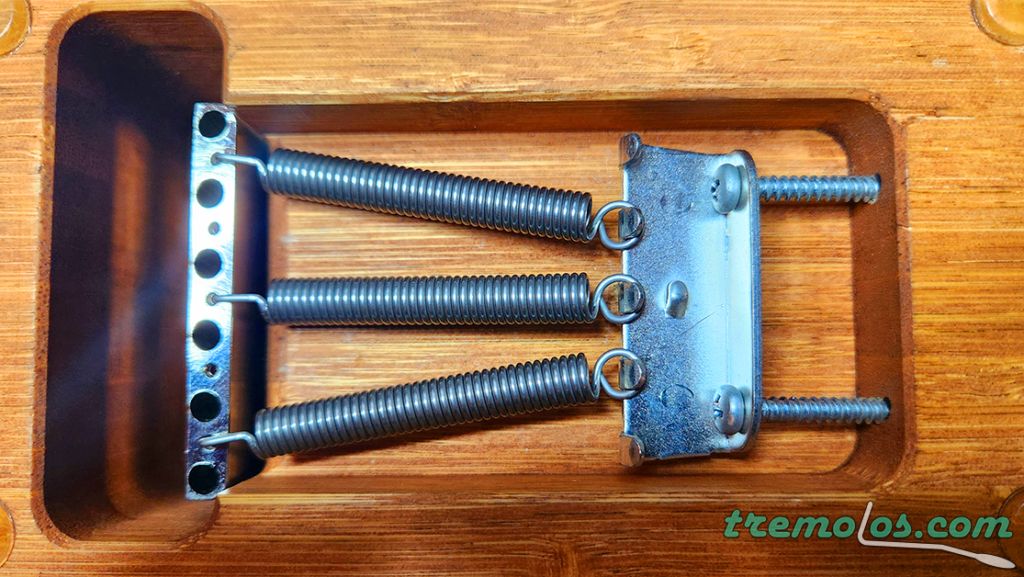
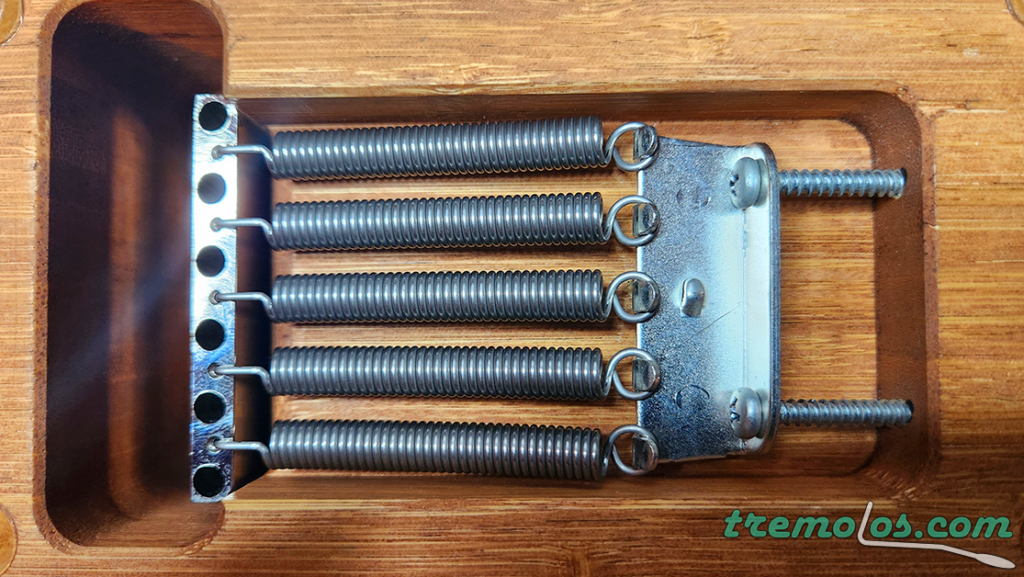
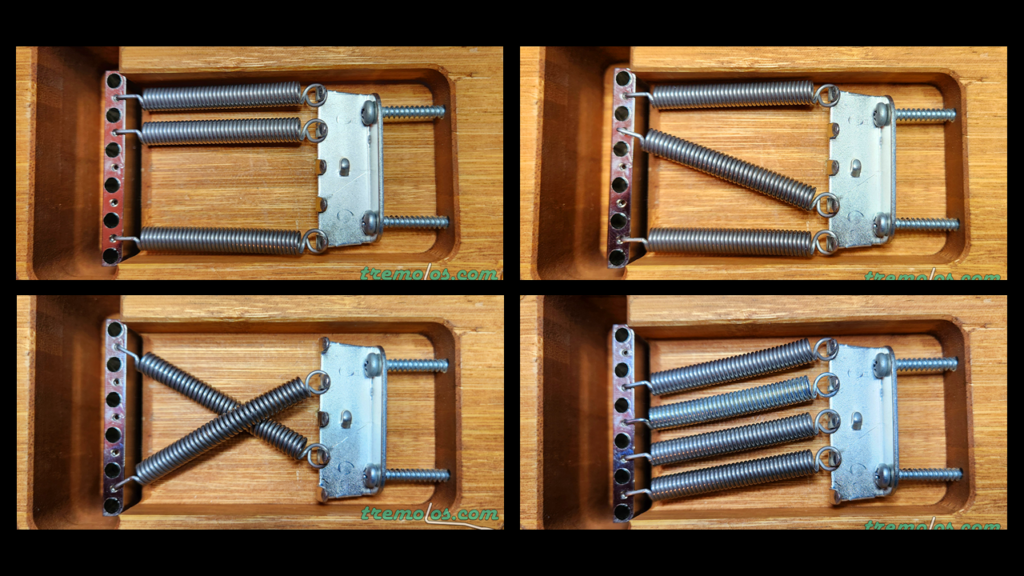 Unusual Tremolo Spring Setups found online
Unusual Tremolo Spring Setups found online